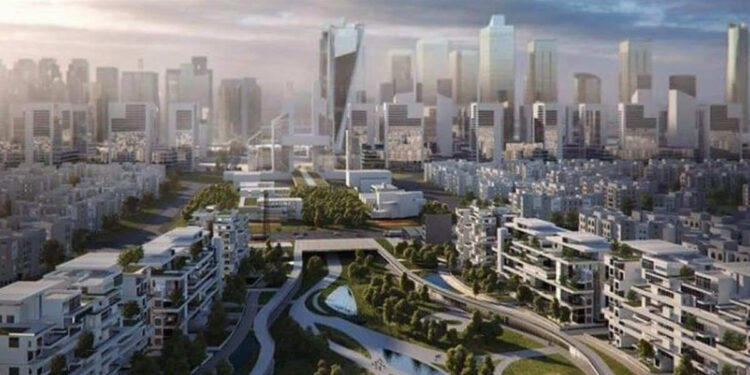The New Administrative Capital’s project phase one has been accomplished, planning to be centered on a new administrative megacity that aims to modernize the seat of government for a country of 103 million people in a new city 35 km east of Cairo.
The Egyptian government announced in 2015 it would build a new capital on 270 sq miles of land located between the main roads leading to the port cities of Suez and Ain El Sokhna. When the megacity is complete in 2050, it will be home to up to 7 million people.
The government decided to develop the project through an Egyptian joint-stock company partnership with the armed forces and the New Urban Communities Authority (NUCA).
The New Administrative Capital’s project consists of three phases. The basic infrastructure of the phase is complete, and construction on several buildings is done. Development of phase 1 will cost about $58 billion when complete in 2030.
Therefore, last December, President Abdel Fattah El-Sisi ordered the government to start relocating to the Government District. He said that there would be six months trial period for the new headquarters and facilities.
The NAC’s phase one covers 40,000 acres and contains eight residential areas with 2.5 million people. A core business center, a government district, some national and international institutions, and universities, the House of Representatives, a sports city, the city of knowledge, the city of culture and arts, and the Green River that cuts through the heart of the capital with a length of 11 kilometers of open parks and restaurants.
The modern city will host two towering skyscrapers. An 80-floor tower has been under construction for two years and has reached the 40th floor. When finished, it will be 385-m high, making it the tallest building in Egypt and Africa, called “The Iconic Tower.”
However, the planned Oblisco Capitale, which will look like a Pharaonic obelisk, will be inaugurated in 2030 at the height of 1,000 meters, making it the tallest structure in the world.
Phase two will expand the city by a further 47,000 acres with more residential and business areas, and phase 3 will follow the same direction by expanding an additional 97,000 acres.
“You can imagine a city that stretches from the Nile River to the Red Sea,” As Mohamed Abdalla said, the chairman of Coldwell Bank Middle East and vice chairman of Acumen Holding Investment Bank. “We are witnessing something significant in the history of Egypt.”
Moreover, over 50,000 employees have been chosen to be relocated to the New Administrative Capital. All of these employees started to go through training programs such as personnel management and human resources programs. Therefore, if their results of the evaluation met the requirements, they would begin to work from their offices in the new capital.





